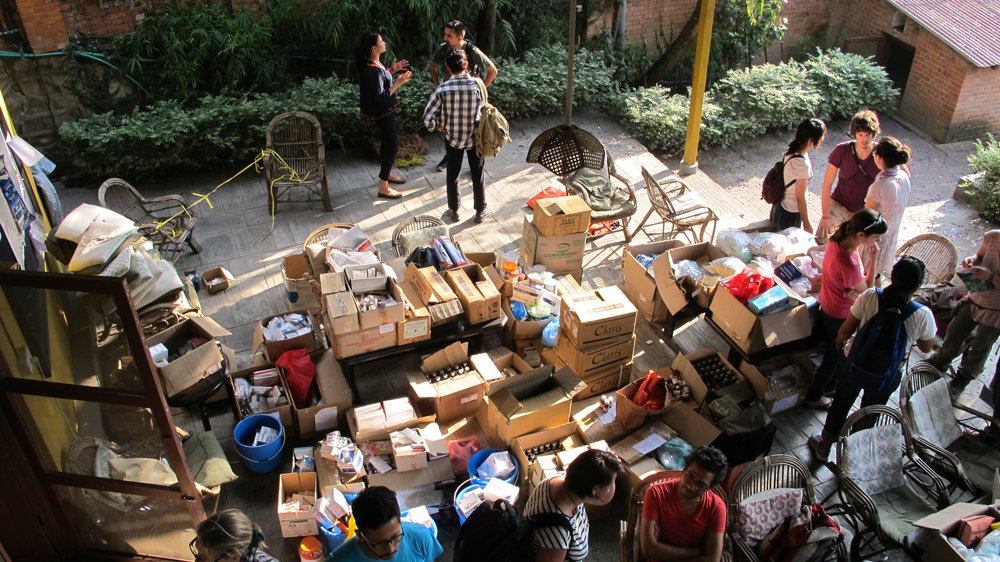First of all!
Thanks to all of you who have send us money for ‘our’ relief projects. It means a lot! Not to us – but to all the people we have been able to help.
We know that we’re only small players in this big mess. BUT we’re HUGE in the small local communities, we reach.
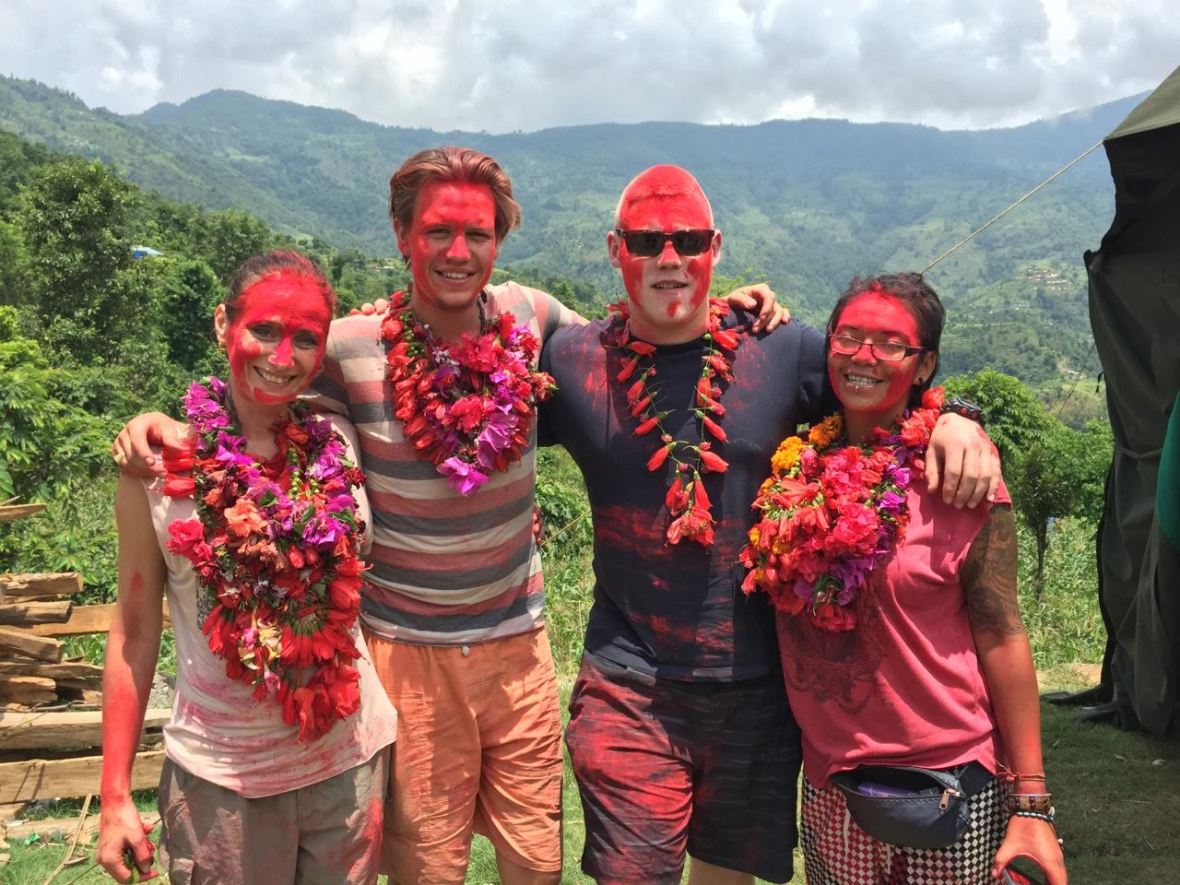
4 of the researchers – from left: Leila (N), David (NL), Christoffer (DK), Corrine (Madagascar)
Until yesterday we thought we did relief work – we don’t! We’re managing the GODS!
When our research team arrived to Muchok in Gorkha this weekned, they got the biggest Tikas we’ve ever seen.
Asking a friend from Kathmandu why they were so big:
It’s because they believe you are Gods (or send by the gods).
A brief status of how we’ve used your contributions so far
As mentioned several times before. We are not specialists in relief work. We haven’t even got into this by determination – we happened to be around when it happened and when people around us started to wake up. Their actions – along with all the encouraging mails and messages we got from friends all over the world and former guests at Tings – motivated us to get out and do something.
In the first 4 weeks we spend around 13,000 USD on relief work. Either by supporting and helping our ‘friends’ (NepalRises, The Yellow House, HelterShelter) who went to remote areas or directly to villages we already had relations to: We founded 2 raids directly – one of them to Mithun’s village.
The money was spend on:
- 8.800 USD Shelter in terms of Tents, Tarps
- 3.700 USD for medicine and medical support
- 600 USD rice
- 250 USD for a few specific groups like the people rescued from Langtang.
It’s not possible to say exactly how many people we reached. Our total ‘help’ is a combination of raids we’ve funded 100% ourselves and raids organized by our friends, where we contribute with selected essentials like shelter and medicine.
But through our direct help we we have given shelter in term of tents or tarps to 550 families or at least 3.000 individuals.
Its impossible to SPECIFY the help each of you have donated
We’re sure that all of you want to have an idea about how much you get for your donation. Like: How much help we get for 10 Euro?
It’s difficult – but still we’ve tried to give you some kind of answer. We want to know ourselves 🙂
- The medicine and medical support is impossible to quantify. We have spend money for medicine – either by shopping medicine ourselves from shopping lists given to us by nurses on the way to help or by contributing to one of the other independent projects we’re helping. Then we have used money for transportation of volunteer nurses giving the medical support.
- Food and shelter is easier to quantify: For 23 USD you have provided relief to one family in terms of temporary shelter – a tarpaulin – and rice.
Some places only shelter was needed, and for 30 USD you have provided shelter for 2 families.
We’re back on the road – second phase started this Friday
After 3 weeks we decided to put the relief work on hold. Long term sustainable solutions were more important. We needed to stop and rethink.
Still we kept getting money from friends around the world. From people personally, as well as those who did amazing projects to raise the awareness and raise money: like Thomas’ nephews doing a flee marked and Photo Farm in Brooklyn NY’s big Saturday event.
The more than 20,000 US we have in our account (together with the funds we will raise) is now ready to be ‘released’.
The monsoon season has started, delaying the rebuilding in two different ways:
- The access to the remote areas is difficult due to land slides, which is much worse than normal as the cracks caused by inumerous earthquakes are filling up with water giving extra pressure on the hillsides
- It’s not a good time to build a permanent house, that needs dry weater to dry and harden
So during the week since we returned to Kathmandu we have met with different people and discussed various rebuilding issues:
- The construction of permanent houses has to be postponed to September, after the monsoon. Until then it’s possible to make temporary shelters with structures, that can easily be turned into permanent solutions, when weather condition allows that.
- Things like solar panels to give electricity, water storage solutions, major road reconstruction (in places without risk of landslides).
- Where & how to focus. This part is the most difficult. Rebuilding is needed everywhere! So for us it has been a matter of:
- And avoiding places where other teams are already helping and/or places where people are rich and resourceful enough to help themselves.
- Finding places and ways to work where your contribution will have the biggest impact (where 2+2=5)
Friday we teamed up with HelterShelter and Rebuild Nepal and send a small research team to Gorkha to check out the situation in three different areas.
Rebuild Nepal is an initiative by friend and Tings guest Leila Hafzi who creates the must stunning bridal dresses here in Nepal – organic of course. She has raised money to help and are in town find out how.
The purpose of the research was to check out the needs in each of the three areas and survey the situation: what is possible, what does it require, taking soil samples and documentation in general. Information we need to decide our next actions.
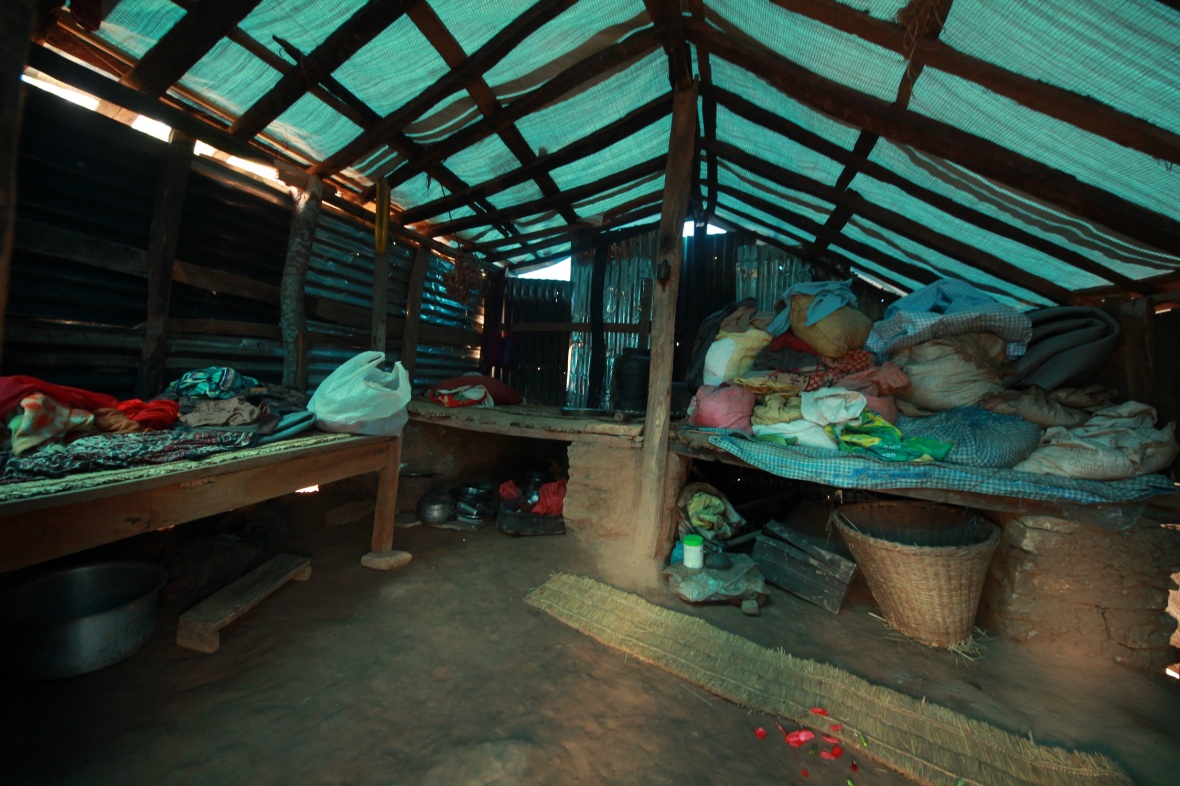
Temporary shelter in Muchok
Our next action is straight forward. We want to rebuild a whole village
The research team returned to Tings Tuesday morning 1 am after a very exiting BUT very tough an rough trip.
Lila knows Nepal – click on the pix below to see the stunning pictures of her dresses in selected locations in Nepal
[EasyGallery key=’38’]
After spending all day yesterday to evaluate all the information from the research and hold them up against our own intuition we decided to join Leila’s Rebuild Nepal who wants to reestablish Muchok and neighbouring villages:
- Through Laila’s many years in Nepal creating dresses she has year long relations to Muchok – and trust means everything to us.
- The ‘mentality’ in Muchok is positive: The people are focused on working together, helping each other and get involved.
- Rebuilding Muchok will serve as a role model for the neighbouring villages. Our efforts will spread fast.
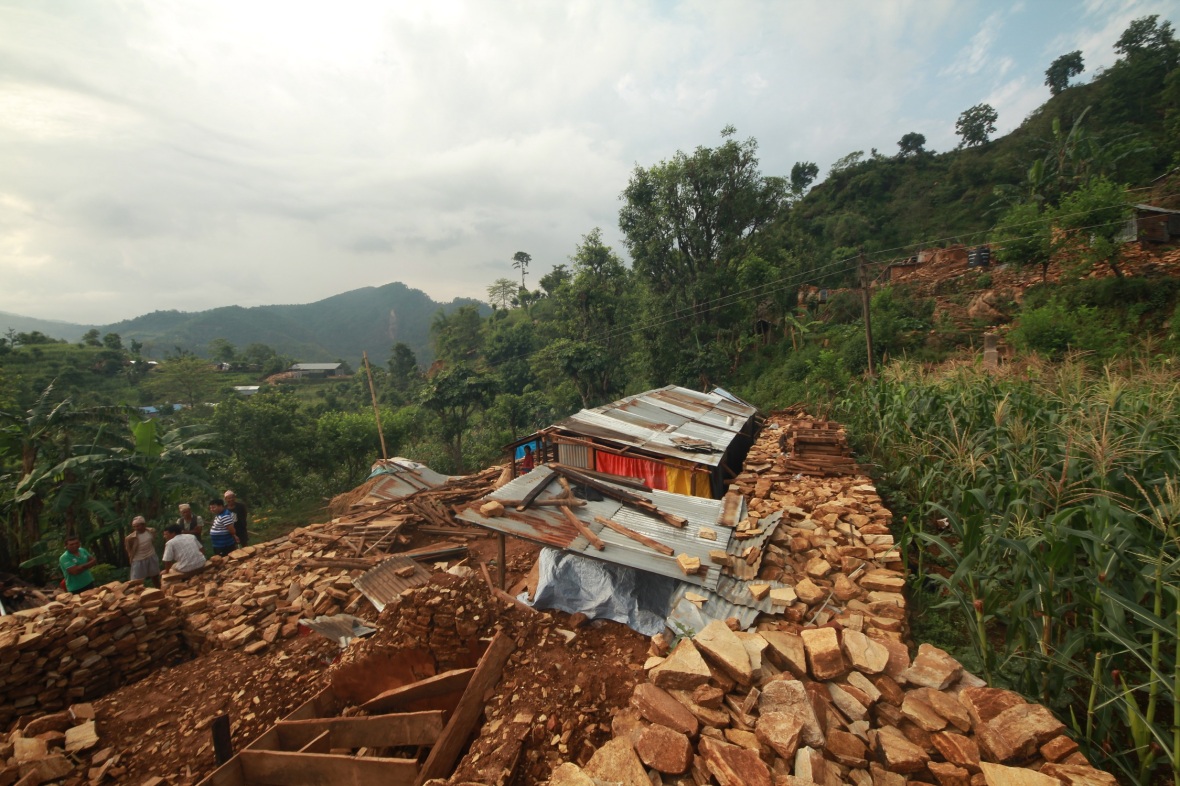
Temporary Shelter – Muchok
These are the things we’re focusing on the next weeks
Muchok is a village of 55 houses and 3 schools. They have already made some temporary shelters using materials from broken houses, but some families still have no shelter. So the things we’re focusing on is:
- Temporay shelters for the families still missing
- Access roads to access the village (approx 3 km damaged road)
- 25 Toilets
- Water supply / storage
- 3 schools schools, long term sustainable.
- Long term sustainable houses for the poorest families.
The solution is for the long term sustainable houses is yet to be decided.
We have a special love for the earth bag houses. But love is not enough to base such an important decision upon. We must use the solution that is best for Muchok. That’s why we have taken soil samples to be analysed. Other Earth-based solutions or bamboo-based structures are other options.
As the monsoon has started we will start out with the most essential things that are urgently needed and continue with the permanent solutions after the rain stops.
Lots of love to all of you
Annette & Thomas
We have blogged regularly about the raids and we will continue doing so. If you are curious check it out here.
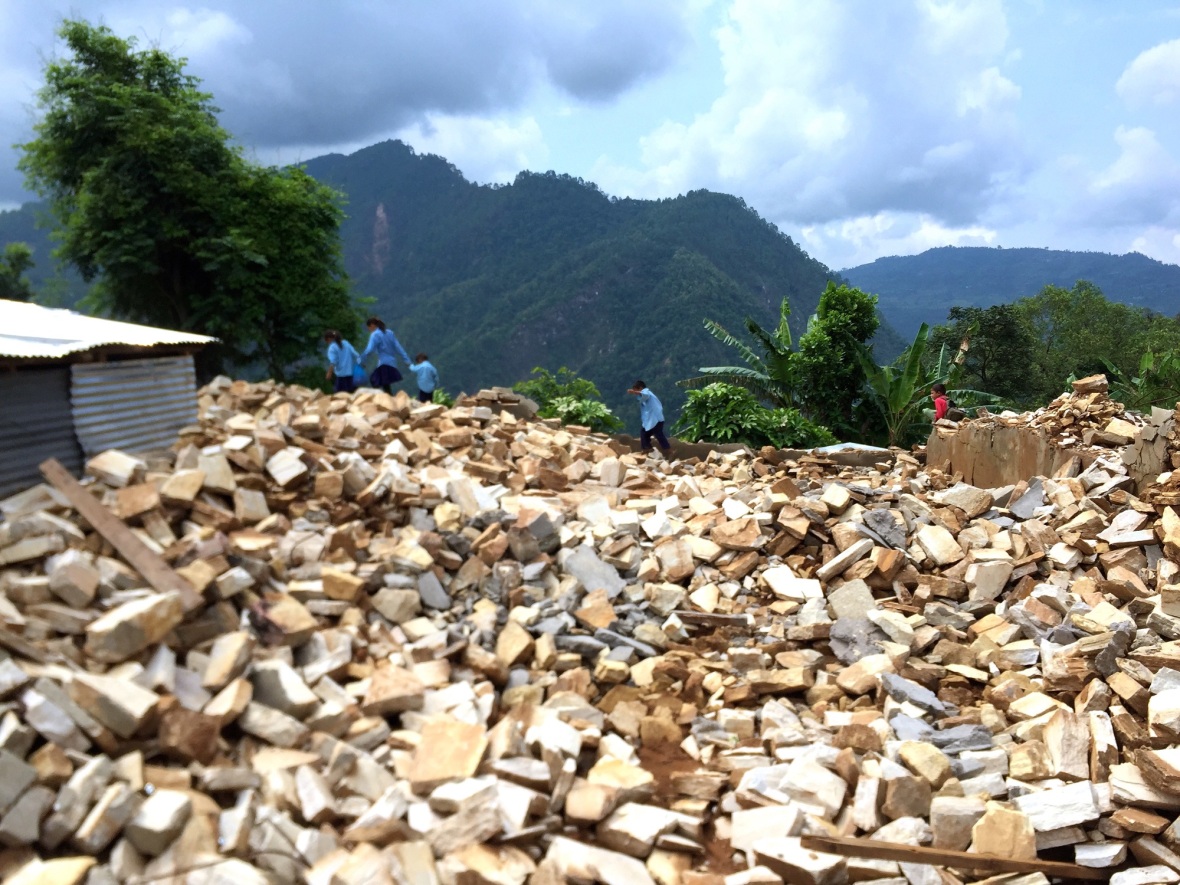
The school in Muchok. with the students temporary shelter to the left.
